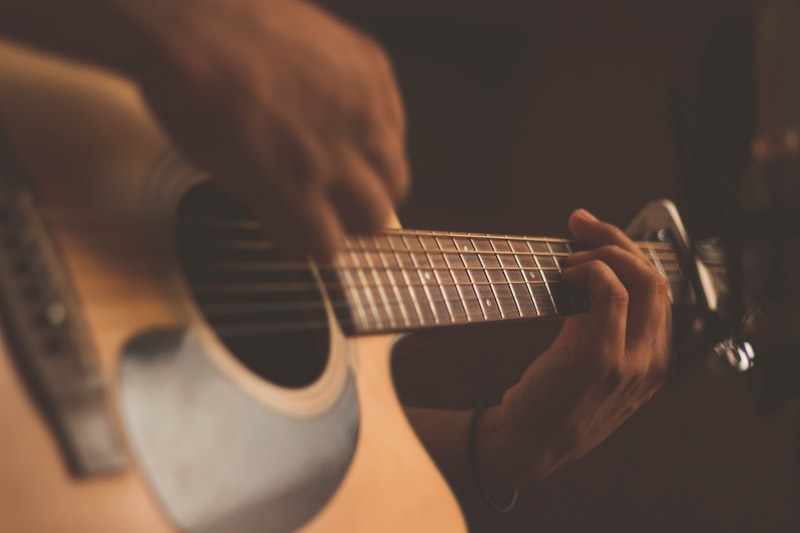The Impact of Instruments on Genre Development: Shaping Musical Styles


Have you ever wondered how musical genres develop and evolve over time? One crucial factor that often goes unnoticed is the impact of instruments. These remarkable tools not only produce sound but also play a significant role in shaping musical styles. From the soulful melodies of the saxophone to the powerful beats of the drum kit, each instrument brings its unique character to the table.
Instruments act as catalysts for innovation within genres. Take, for instance, the birth of jazz music. In the early 20th century, musicians started experimenting with new instruments like the trumpet, clarinet, and piano. These instruments brought a fresh and vibrant sound to the scene, leading to the creation of an entirely new genre. The improvisational nature of jazz was made possible by the flexibility and expressive capabilities of these instruments.
Similarly, the electric guitar revolutionized rock and roll. With its ability to produce distorted tones and sustain notes, the electric guitar added a level of intensity and raw energy to the genre. Think of legendary guitarists like Jimi Hendrix or Eric Clapton, whose innovative use of this instrument shaped the course of rock history.
Moreover, instruments can define the characteristics of a specific style. Take the banjo, for example, an essential component of bluegrass music. Its twangy sound and intricate fingerpicking techniques give bluegrass its distinctive flavor. Without the banjo, the genre wouldn’t be the same.
Furthermore, instruments can transcend boundaries and bridge cultures. The incorporation of traditional instruments from various regions adds depth and richness to world music. Whether it’s the sitar in Indian classical music or the djembe in African rhythms, these instruments bring cultural nuances to the universal language of music.
Instruments wield immense power in shaping musical genres. They contribute to the formation of new styles, define the characteristics of existing ones, and facilitate cultural exchange. So, next time you listen to your favorite genre, pay attention to the instruments playing their part in creating that magical experience. Let the music take you on a journey through the profound impact of instruments on genre development.
From Classical to Jazz: How Instruments Revolutionized Musical Genres
Introduction:
Have you ever wondered how music genres evolve over time? The transformation from classical to jazz is a fascinating journey that showcases the power of instruments in shaping and revolutionizing musical styles. In this article, we’ll explore the pivotal role of instruments in driving this evolution, unlocking new sounds, rhythms, and expressive possibilities.

The Birth of Classical Music:
Centuries ago, classical music emerged as an intricate and refined genre, dominated by orchestras and ensembles. Key instruments like the piano, violin, cello, and flute set the foundation for symphonies, concertos, and sonatas. With their ability to produce rich melodies, harmonies, and dynamic ranges, these instruments allowed composers to create grand and emotionally captivating compositions.
The Rise of Jazz:
In the early 20th century, jazz erupted onto the scene, challenging traditional musical conventions with its improvisational spirit and syncopated rhythms. It was through the innovative use of instruments that jazz musicians were able to breathe life into this genre. The saxophone, trumpet, double bass, and drums became the backbone of jazz ensembles, introducing vibrant solos, complex harmonies, and infectious grooves.
Breaking Boundaries:
One of the defining characteristics of jazz was its departure from rigid compositional structures. Improvisation took center stage, giving musicians the freedom to express themselves spontaneously. This transformative shift was made possible by the versatility of jazz instruments. The saxophone’s soulful wails, the trumpet’s brassy tones, and the rhythmic intricacies of the drums all combined to create a unique musical language.
The Influence Spreads:
As jazz gained popularity, its influence began to permeate other genres, sparking a wave of experimentation and fusion. Artists across different musical landscapes started incorporating elements of jazz into their compositions. Rock, pop, and even classical musicians drew inspiration from jazz instruments, infusing their own styles with fresh and exciting sounds.
Conclusion:
The evolution from classical to jazz exemplifies the transformative power of instruments in shaping musical genres. From the grandeur of orchestras to the free-spirited improvisation of jazz ensembles, these remarkable tools have pushed boundaries, inspired creativity, and revolutionized music as we know it. As you explore the vast array of musical genres today, take a moment to appreciate the role that instruments play in shaping our sonic landscape.
The Electric Guitar’s Electrifying Influence on Rock ‘n’ Roll and Beyond
Article:
When it comes to shaping the sound of rock ‘n’ roll, one instrument stands out as a true game-changer—the electric guitar. With its electrifying presence and captivating melodies, the electric guitar has left an indelible mark on the music industry, transforming the way we perceive and experience rock music. From its humble beginnings to its modern-day prominence, this six-string wonder has revolutionized the world of music.
Back in the 1930s, the emergence of the electric guitar sent shockwaves through the music scene. This groundbreaking innovation allowed musicians to amplify their instruments, producing powerful sounds that could be heard over the roaring crowds. Gone were the days when acoustics ruled the stage—now, the electric guitar took center stage, commanding attention like never before.
The electric guitar became synonymous with rebellion and freedom, channeling the raw energy of rock ‘n’ roll. Artists like Chuck Berry, Jimi Hendrix, and Keith Richards mastered its electrifying potential, pushing boundaries and reshaping musical genres. Their blistering solos and catchy riffs resonated with audiences worldwide, fueling a cultural revolution that still reverberates today.
What makes the electric guitar so special is its ability to convey emotions like no other instrument. With each strum and bend of the strings, it tells a story—a story of heartbreak, passion, and defiance. Its versatility allows musicians to create a wide range of tones, from soulful blues to aggressive metal. Whether you’re shedding tears to a melancholic melody or headbanging to a thunderous riff, the electric guitar has the power to transport you to another world.
Beyond rock ‘n’ roll, the electric guitar has found its way into various musical genres, leaving an everlasting impact. From jazz to country, from pop to funk, its distinctive sound has infiltrated every corner of the music industry. It has become a symbol of artistic expression and a conduit for innovation, constantly pushing boundaries and inspiring generations of musicians to explore new sonic territories.
Keyboards and Synthesizers: Unveiling the Evolution of Electronic Music Styles
Are you ready to embark on a melodic journey through the captivating world of electronic music? In this article, we will unravel the evolution of electronic music styles and how keyboards and synthesizers have played an instrumental role in shaping this mesmerizing genre.
Imagine a time when music was predominantly created using traditional instruments like guitars, pianos, and drums. Then came along the keyboards and synthesizers, revolutionizing the way music was composed, produced, and performed. These electronic marvels opened up infinite possibilities for musicians, allowing them to explore uncharted territories and create unique sounds that were previously unimaginable.
Keyboards, with their rows of black and white keys, became the backbone of electronic music. They provided a versatile platform for musicians to experiment with different tones, melodies, and harmonies. Whether it’s the soulful chords of a grand piano or the futuristic blips and bloops of a digital synth, keyboards became the ultimate playground for sonic innovation.
But what truly set electronic music apart was the introduction of synthesizers. These magical machines had the power to transform any sound into something extraordinary. By manipulating waveforms, filters, and envelopes, synthesizers enabled musicians to sculpt sounds that resonated with the deepest corners of the human psyche. The possibilities were limitless, from creating otherworldly atmospheres to crafting pulsating basslines that made hearts throb and dancefloors quake.
As electronic music evolved, so did the styles that emerged from its ethereal depths. From the funky beats of disco in the ’70s to the pulsating rhythms of techno in the ’80s, each era brought forth its own distinct flavor. Genres like house, trance, drum and bass, and dubstep continued to push the boundaries, captivating listeners with their infectious energy and mind-bending soundscapes.
Today, electronic music has become a global phenomenon, dominating the airwaves and festival stages around the world. Artists like Daft Punk, Aphex Twin, and Skrillex have become household names, showcasing the incredible range and diversity within the genre. Keyboards and synthesizers remain essential tools in the arsenal of electronic musicians, allowing them to craft sonic tapestries that transcend conventional boundaries.
Keyboards and synthesizers have been pivotal in shaping the evolution of electronic music styles. These instruments have empowered musicians to unleash their creativity, pushing the boundaries of sound and captivating audiences worldwide. So next time you find yourself grooving to an infectious electronic beat, remember the keyboards and synthesizers behind the magic, weaving together a tapestry of melodies that will continue to amaze and inspire for generations to come.
The Beat Goes On: Percussion’s Pivotal Role in Shaping Rhythm-Based Genres
When it comes to the world of music, rhythm is the heartbeat that keeps everything in sync. And at the core of rhythm-based genres, percussion plays a pivotal role, driving the beat and infusing a unique energy into the music. From the thunderous sound of drums to the subtle shakers and tambourines, percussion instruments add depth, texture, and groove to various musical styles.
Imagine a song without any percussion—it would lack that infectious pulse that gets your foot tapping and your body moving. Percussion instruments provide the foundation for rhythmic patterns, establishing a framework for other musicians to build upon. They create a sense of momentum, carrying the melody forward and enhancing the overall musical experience.

In many cultures around the world, percussion has been an integral part of their traditional music for centuries. The rhythmic patterns produced by drums, cymbals, and other percussive instruments reflect the cultural identity and heritage of a community. For example, African drumming traditions have heavily influenced popular genres like jazz, funk, and hip-hop, with their intricate polyrhythms and syncopated beats.

Percussion instruments come in various shapes and sizes, producing a wide range of sounds. The drum set, consisting of bass drums, snare drums, tom-toms, hi-hats, cymbals, and more, forms the backbone of many modern music genres. Its versatility allows drummers to create complex rhythms and dynamic fills, adding excitement and intensity to the music.
But percussion goes beyond just drums. Instruments like congas, bongos, djembes, maracas, and tambourines bring a vibrant and colorful element to the mix. They provide accents, embellishments, and syncopations, elevating the sonic landscape and giving each genre its distinct flavor.
Think of percussion as the spice in a musical dish. It adds that extra kick, making the music more flavorful and captivating. Whether it’s the driving pulse of a rock anthem, the infectious groove of a Latin dance track, or the intricate polyrhythms of an Afrobeat composition, percussion is the heartbeat that keeps the beat alive.

Percussion is an essential component of rhythm-based genres. It shapes the music, sets the pace, and adds layers of excitement and energy. From traditional cultural rhythms to contemporary music styles, percussion instruments play a vital role in creating memorable and captivating musical experiences. So next time you find yourself tapping your foot or nodding your head to a catchy beat, remember the unsung heroes behind it—the percussionists who keep the rhythm alive.




